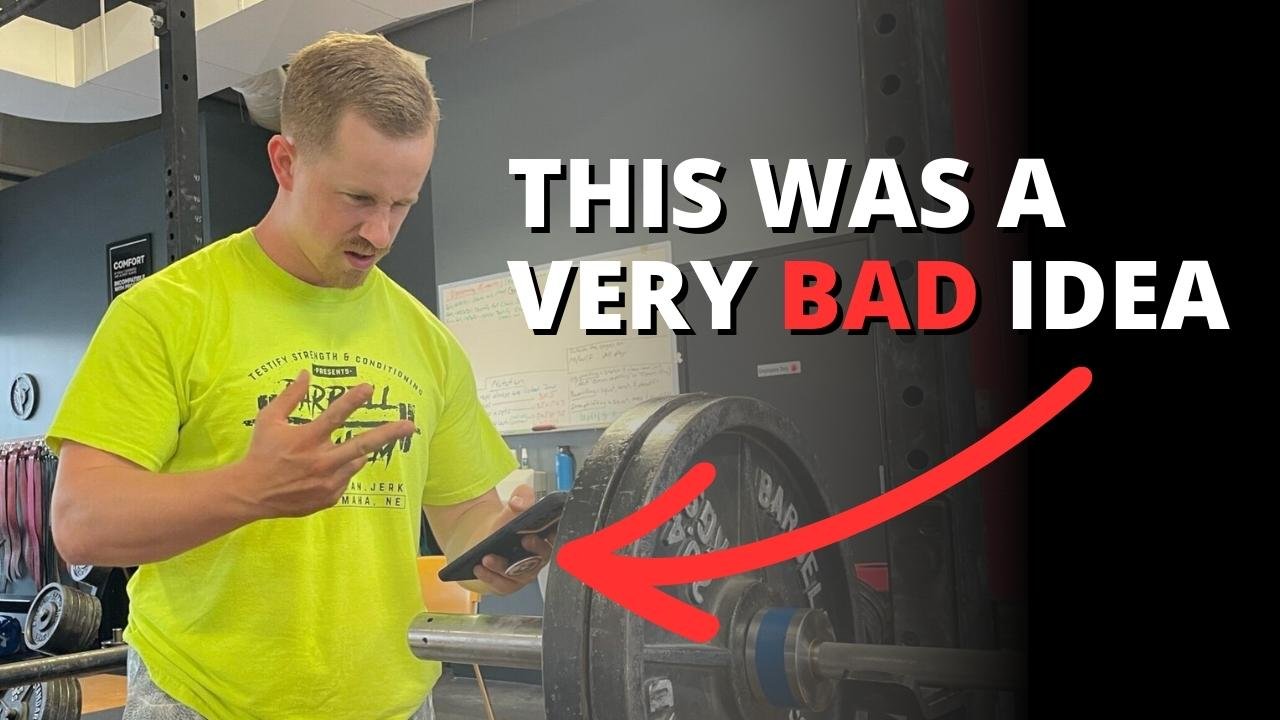How to Handle a Misload (it's NOT what you think)
/You’ve misloaded your barbell, so what do you do now? Hint: There’s more to it than just correcting the math.
The Situation
Specifically, how do you handle the type of misload wherein you unevenly load your barbell? For example, you mean to load 175 lb (i.e., total weight) on the bar, but instead of putting a 45 lb plate and two 10 lb plates on each side, you correctly put a 45 and two 10s on the left side and then accidentally put a 45 and only one 10 on the right side.
An uneven misload like this can happen for a number of reasons, and you might be surprised at how much you’ll notice a 5 lb or even a 2.5 lb difference between the two sides of the barbell when it’s uneven (watch the included video for what this looks like in action). Using the above 175 lb squat for our example, let’s go through the scenario.
You’ve unevenly - but unknowingly - misloaded your barbell as described above, and you go to unrack it. During the unrack, you immediately notice the difference as you start to stand the bar up from the j-hooks. The right side lifts off faster and higher than the left, you quickly realize that something is amiss, and you wisely re-rack the bar.
What to do?
Step #1: Fix the misload.
This part is fairly obvious - you check both sides of the bar, realize your mistake, and add the missing 10 lb plate to the right side of the bar. You double check the situation and get ready to unrack the bar again.
Step #2: Recalibrate yourself.
(Note: This process is demonstrated in the video below)
This part is not obvious. When you unracked the unevenly loaded bar a moment ago, your brain started adapting to the situation immediately (yes, without your permission); in other words, your brain starts to treat the uneven bar as normal. This means that after you’ve added the correct amount of weight to the right side of the bar, the right side will now feel oddly heavier than the left side.
To address this situation and recalibrate yourself, you simply unrack the correctly loaded barbell (which will feel slightly uneven), stand it up, and then set it right back in the hooks. Don’t even walk it out from the rack. Just stand it up for a few seconds and then set it back down again. By doing this, you’ve forced your brain to adapt to the feeling of the correctly loaded weight.
Step #3: Perform the work set
Now that you’ve gotten a sense of what the weight should feel like, you immediately unrack the bar again, take a step back, and perform your work set.
This 3-step solution is simple, fast, very effective, and it works for the squat, press, and bench press (obviously, there’s no “walking the bar out of the rack” with the bench press, but you get the idea). However, the deadlift requires a slightly different approach.
The Deadlift
The deadlift’s equivalent of “unracking the bar” to recalibrate would be picking the bar up off the floor a few inches, which is actually part of the first rep anyway. As a result - and unlike the situation with the squat, press, or bench press - the deadlift doesn’t provide a great opportunity to recalibrate before starting the set.
Instead, simply remind yourself that - after you’ve corrected the misload - one side of the bar is going to feel a bit heavier than the other side. However, this will only be the case for the first rep, because your brain will use that first rep to recalibrate itself to the correct loading, so all subsequent reps will feel normal.
In other words, the first rep IS the recalibration, so prepare for it. Remind yourself to pull a bit harder on the “formerly-lighter-side” and you’ll be good to go.
If you’d rather, you could choose to pull the bar off the floor a few inches and then set it back down again to mimic the recalibration process used for the squat, press, and bench press, but my recommendation is to not waste the effort - once you get the bar moving, keep it moving and just finish the rep.
As always, we hope this helps you get stronger and live better.
(Some links may be affiliate links. As an Amazon Associate, Testify earns from qualifying purchases.)



